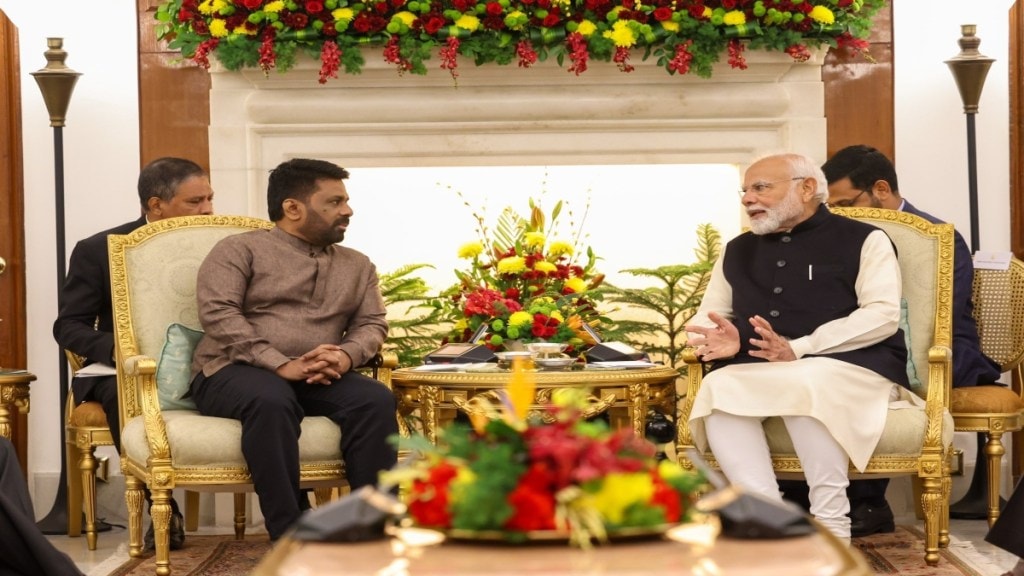Prime Minister Narendra Modi and Sri Lankan President Anura Kumara Dissanayake held extensive talks in New Delhi, marking a significant step in strengthening ties between the two neighbouring countries. This was Dissanayake’s first official foreign trip since becoming president in September 2024, underscoring the importance he attaches to India-Sri Lanka relations. The discussions on December 15, 2024, focused primarily on expanding economic cooperation, enhancing regional security, and deepening bilateral ties in a range of areas, including defence, trade, and cultural exchanges.
Dissanayake’s visit was crucial as it came at a time when Sri Lanka is still recovering from the severe economic crisis it faced in 2022. During their meeting, the Sri Lankan president expressed deep gratitude for India’s support, particularly during the crisis, stating, “India’s assistance during our unprecedented economic crisis has been a lifeline for Sri Lanka. The credit lines and grants have helped stabilize our economy and provide essential support to our people.”
Economic Support and India’s Role in Sri Lanka’s Recovery
A significant part of the discussions centered on the economic cooperation between the two countries, with a particular focus on India’s support to Sri Lanka during its economic crisis. Prime Minister Modi highlighted that India had provided credit lines and grants worth approximately USD 4 billion, a crucial lifeline for Sri Lanka when it was facing severe financial challenges. Modi noted, “India will continue to stand with Sri Lanka, ensuring its recovery and helping to stabilize its economy. Our commitment to Sri Lanka’s progress is unwavering, and we are looking towards a future of economic cooperation.”
Joint Statement
The joint statement released after the meeting underscored India’s ongoing support for Sri Lanka’s economic recovery, with both leaders agreeing to explore new avenues to strengthen bilateral trade and investment. “The continued collaboration will focus on investment-led growth and enhancing physical, digital, and energy connectivity between the two countries,” the joint statement stressed.
Both leaders also discussed the expansion of the India-Sri Lanka Free Trade Agreement (ISFTA) and the immense potential for increasing trade and investment, particularly in sectors such as agriculture, dairy, and textiles. President Dissanayake highlighted the importance of India’s market for Sri Lankan exports, saying, “Sri Lanka is keen to expand its trade ties with India, and we are excited about the opportunities that lie ahead. India’s vast market offers immense potential for Sri Lankan goods, and we are looking forward to deepening our economic engagement.”
Defence Cooperation and Regional Security
Alongside economic issues, defence cooperation and regional security were also key areas of discussion. Both leaders recognized the growing security concerns in the Indian Ocean, especially with the increasing presence of China in the region. Dissanayake reiterated Sri Lanka’s commitment to not allowing its territory to be used against India’s security, stating, “Sri Lanka will not allow its territory to be used for any activity that harms India’s security. We are committed to maintaining peace and stability in the region.”
Prime Minister Modi welcomed this assurance, emphasizing that India and Sri Lanka, as natural partners, would continue to work closely to counter traditional and non-traditional security threats, including terrorism, piracy, and narcotics trafficking. Both leaders agreed to deepen their defence and maritime security cooperation through joint exercises, intelligence sharing, and capacity-building measures.
The two sides also discussed expanding their cooperation in maritime surveillance. India’s assistance to Sri Lanka in strengthening its maritime capabilities was acknowledged by President Dissanayake, who thanked India for providing Offshore Patrol Vessels and support in setting up the Maritime Rescue and Coordination Centre in Sri Lanka. He stated, “India’s assistance in enhancing our maritime security capabilities has been invaluable. The joint efforts of our navies in tackling narcotics trafficking in the region are a testament to our strong defence collaboration.”
Strategic and Economic Cooperation
The joint statement issued after the meeting outlined a comprehensive roadmap for further cooperation between the two countries. It highlighted the importance of regular dialogue and mutual trust in ensuring a secure and prosperous future for both nations. It also noted that both leaders had agreed to work together on addressing the challenges in the Indian Ocean region, including ensuring freedom of navigation, countering cyber threats, and addressing climate change.
Additionally, the statement highlighted the continued focus on economic cooperation, particularly in infrastructure development, renewable energy, and digital connectivity. The leaders agreed to set up a Joint Working Group to explore opportunities for collaboration in Sri Lanka’s agricultural modernization and to promote sustainable practices in key sectors such as dairy farming, which both countries had already begun working on.
Fishermen’s Issue and Sustainable Solutions
A longstanding issue in India-Sri Lanka relations is the conflict over fishermen crossing maritime boundaries. Both leaders acknowledged the sensitivities surrounding this issue and expressed their commitment to finding a “durable” and “sustainable solution.” As part of their discussions, they agreed to initiate talks to address the welfare of fishermen on both sides, ensuring that the livelihoods of the affected communities were protected.
“We are committed to finding a lasting solution to the issue of fishermen,” President Dissanayake said. “This is an issue that affects both of our countries, and we are determined to find an approach that benefits all parties involved.”
Expanding People-to-People Ties and Cultural Cooperation
President Dissanayake expressed his enthusiasm for promoting Sri Lanka’s rich cultural heritage in India, while Prime Minister Modi highlighted the potential of the Ramayana and Buddhist Circuits as tools for tourism and cultural diplomacy. “The Ramayana Circuit and the Buddhist Circuit offer immense opportunities to enhance cultural ties and increase tourism between our countries,” Modi stated.
Both countries also agreed to further explore educational cooperation, particularly in research and technology, and to establish more student exchange programs that would help build closer ties between the younger generations of both nations.


